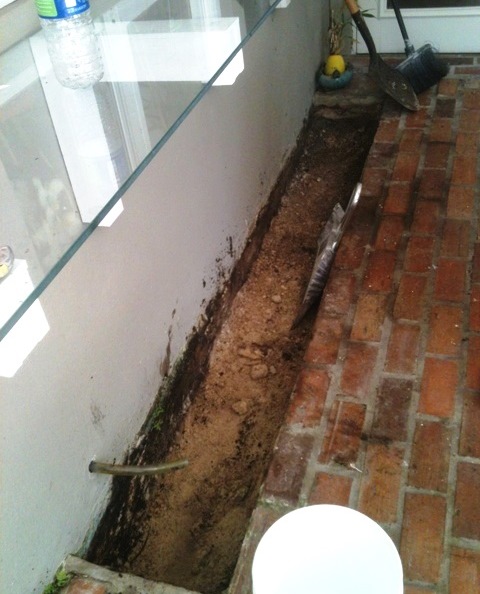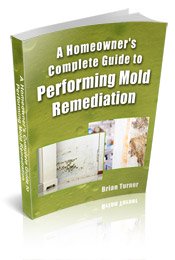Find a Mold Specialist Now
Click or Call, Toll-Free 24/7
Mold Frequently Asked Questions
How do I know if I have mold in my home?
You might be able to see mold in your home, growing on walls, floors, carpet, ceilings or bathroom fixtures. However, mold often grows in places where it cannot be easily seen, like under carpets, inside walls and inside heating, ventilation and air conditioning ducts. You should suspect mold if your home has a musty smell. You should also know that mold is likely if you’ve had flooding or a water leak in your home.
To find out for sure if there’s mold in your home, you need to call in a certified mold tester. Most certified mold testers are engineers and they are trained to locate mold even in hard-to-see places. They can let you know if there is mold in your home and if so, what type of mold it is. Follow this link to find certified mold testers near you.
Is mold in my home dangerous?
It can be dangerous. The degree of risk depends on numerous factors, including the type of mold (some strains are more hazardous to your health than others, although it’s not good for you to be inhaling any type of mold spores), the amount of mold, whether or not you’re allergic to mold, and the state of your health and the health of your family members. Health problems commonly associated with household mold include coughing, sneezing, sore throat, runny nose, headaches or migraines, sinus infections, pneumonia and asthma attacks. Infants, elderly people and those with respiratory disorders like asthma or emphysema are most susceptible to mold-related health problems, but even healthy young adults can be affected.
If you’re experiencing health problems you think might be due to mold exposure, see your doctor as soon as possible and let your doctor know your symptoms may be mold-related. You can have a certified mold tester come to your home and test for mold to confirm whether or not you’ve been exposed to household mold. He or she will be able to tell you what kind of mold is in your home, too, so you can let your doctor know exactly what you’ve been exposed to. Follow this link to find certified mold testers in your area.
What is the best way to test for mold?
You can purchase test kits that allow you to test your home for mold, but we recommend calling in an expert instead. Certified mold testers are trained to locate all traces of mold in a home and they can also tell you what strains of mold are present. Do-it-yourself mold tests aren’t always accurate and many require you to send samples to a lab to find out what strains of mold are present, at significant extra cost. Hiring a professional for the job simply provides better results.To find certified mold testers near you, just follow the link.
What if I find black mold?

When people talk about black mold, they are usually referring to a strain of mold called Stachybotrys chartarum, but there are other strains of mold that also appear black in color. Stachybotrys chartarum is sometimes referred to as toxic mold, although the mold itself is not toxic. It produces toxic compounds, which have been linked to numerous health problems, including allergic reactions, hives, shortness of breath, coughing, sneezing, chronic sinus infections, bronchitis, pneumonia, asthma attacks, the development of asthma-like symptoms in people not previously diagnosed with the condition, and even bleeding in the lungs. See a doctor if you’re experiencing any symptoms you think might be related to exposure to black mold.
If you find black mold in your home, you need to have it removed as soon as possible. Infants, elderly people, people with pre-existing respiratory disorders or disorders of the immune system, and people experiencing mold-related health problems should not reside in the home until the mold has been removed. We recommend calling a mold removal professional, because a professional will have all the necessary safety gear and will know how to remove the mold safely. Follow this link for a list of experienced mold removal professionals near you.
Should I leave my home if I have mold?
There’s not a simple, straightforward answer to this question. There are numerous factors to take into consideration when deciding if you can safely remain in your home or if you should leave until the mold can be removed. Things to consider include how much mold is in the home, where the mold is located in the home, the strain of mold (some strains are more hazardous to your health than others), whether you have any respiratory disorders or disorders of the immune system that may be adversely affected by exposure to mold, and whether you’re having symptoms related to mold exposure, such as coughing, sneezing, sore throats or headaches. Talk to your doctor for advice if you’re not sure whether you can safely remain in your home.
How do I get rid of mold?
The best way to remove mold depends on where the mold is growing. Mold can be removed from non-porous surfaces like tile, metal and glass by simply scrubbing with an anti-microbial cleanser.
It’s more difficult to remove mold from semi-porous substances, like wood. Sometimes mold cannot be adequately removed from wooden surfaces and instead the wood must be removed and replaced. Other times, wood can be sanded to remove mold or the mold can be encapsulated (covered with a sealant). We recommend only professionals sand moldy wood, since the process disperses hundreds of thousands of mold spores into the air, where they are easily inhaled, exposing you to serious health risks.
It’s usually impossible to remove mold from porous substances like drywall and carpet, so those items must be removed and replaced. Care must be taken when removing moldy materials so that you don’t inhale hazardous mold spores and so that you don’t inadvertently spread mold spores to other areas of the home.
Removing mold from heating, ventilation and air conditioning systems is much more complicated and requires special equipment most homeowners don’t have readily available. We recommend hiring a professional to remove mold from your HVAC system.
We recommend consulting with a mold remediation professional before attempting to remove mold from your home. Most offer free in-home consultations so even if you plan to handle the job yourself, you can get some free expert advice about the best way to proceed. Follow this link to find experienced mold remediation professionals offering free in-home consultations in your area.
Can moldy items in my home like furniture be saved?
It depends on the materials from which the furniture is made. Soft furnishings, like couches and mattresses, will need to be removed and discarded. It’s just not possible to remove mold from fabric. It’s easier to remove mold from hard, non-porous surfaces like metal and glass, so furnishings constructed from those materials can probably be saved.
You might be able to save wooden furniture, although it may need to be sanded in order to remove all traces of mold. Because sanding moldy wood disperses potentially hazardous mold spores into the air, we recommend only professionals tackle those tasks. In some cases, it may cost more to clean and repair moldy wooden furnishings that to simply replace them.
We recommend consulting with a mold remediation professional if you aren’t sure if furnishings can be saved or if you need assistance removing mold from wooden furniture.
Can I clean up mold myself?
Maybe. The Environmental Protection Agency recommends hiring a mold remediation professional if you have mold covering an area larger than three square feet, if you have mold in your home’s HVAC system, and if mold grows after flooding with water contaminated with sewage or other harmful substances. We also recommend against tackling the job yourself if you are experiencing mold-related health problems or have health problems like asthma or immune system disorders that can be made worse by increased exposure to mold. Talk to your doctor if you’re not sure if it’s safe for you to clean up mold.
If mold is making me sick, will I get better when it’s removed?
If mold is making you sick, you’ll need to have the mold removed if you want to recover. You may also need medical treatment. For instance, if you develop bronchitis or pneumonia as a result of exposure to mold, you’ll most likely need antibiotics in order to recover. You probably will not get better, though, even with medical treatment, if you continue to be exposed to mold. Removing all traces of mold from your home will be an important part of your treatment but that alone might not make you well.
If you’re experiencing mold-related health problems, you definitely should not attempt to remove the mold from your home yourself. That will only expose you to more mold spores and will likely worsen your symptoms. You’ll need to hire a mold removal professional to handle the job for you. For a list of experienced mold removal professionals in your area, just follow the link.
How do I prevent mold from returning?
To prevent mold from returning, you must identify and correct whatever problem led to the development of mold in the first place. For instance, if you had a leak under the bathroom sink and mold grew there, you have to fix the leak. If you clean up the mold but your sink continues to leak, you’ll soon have mold again.
It’s also important to make sure no traces of mold are left behind when you clean up mold, because mold grows rapidly and spreads easily from one part of a home to another. If you miss even a little bit, you’ll soon be facing a full-blown mold problem again.
For more on mold prevention, follow the link.
Return From Mold Frequently Asked Questions To Our Black Mold Health Symptoms Home Page





